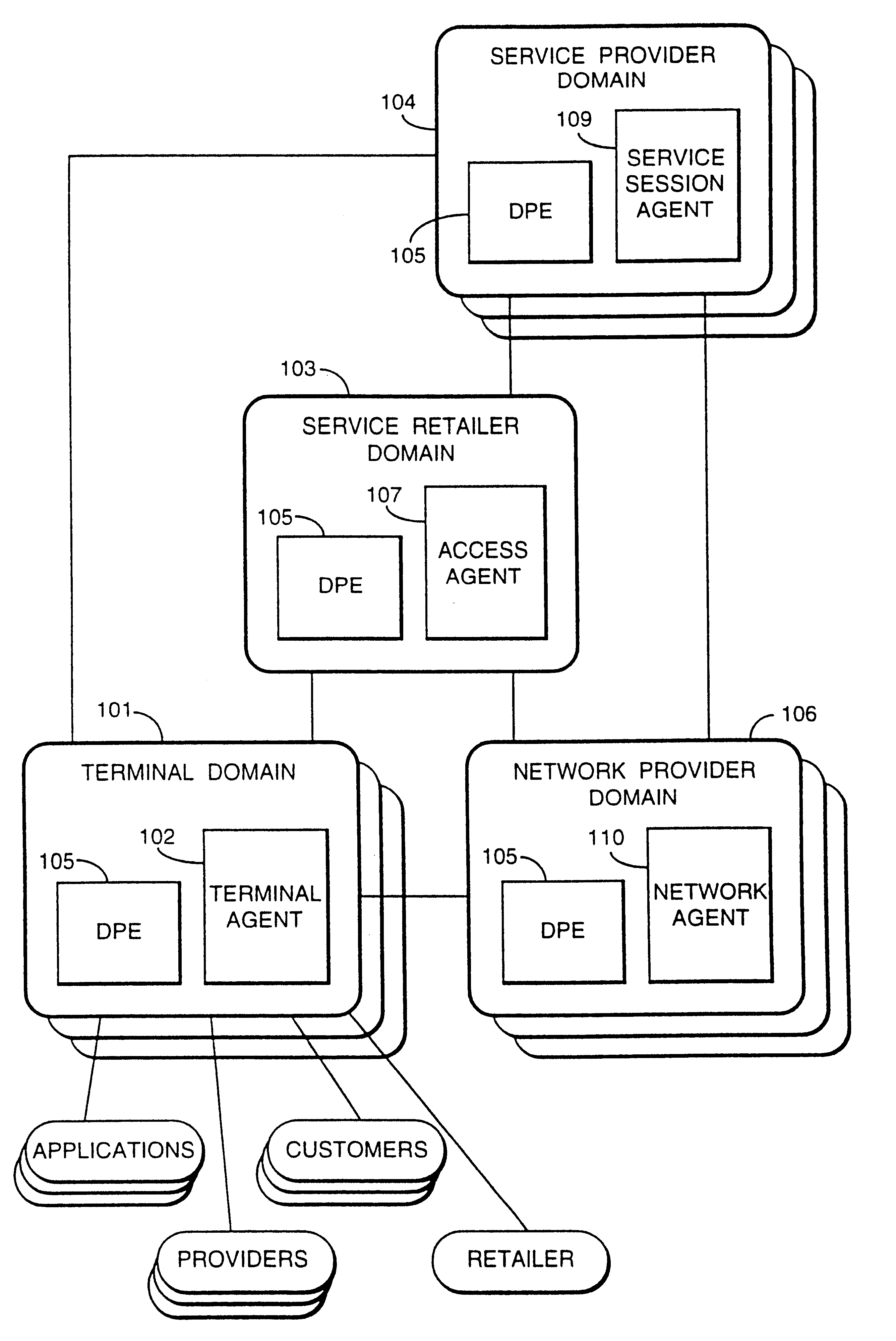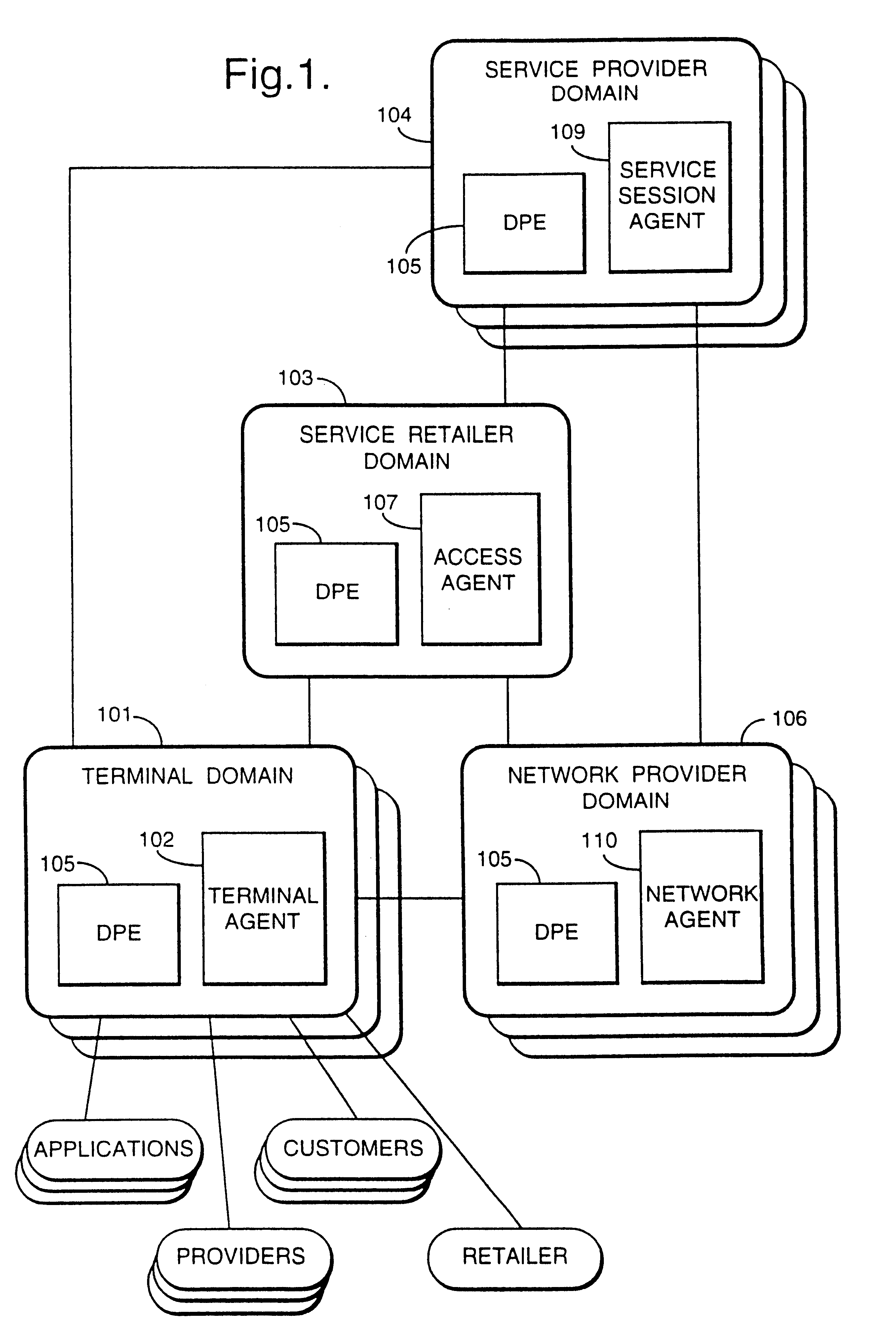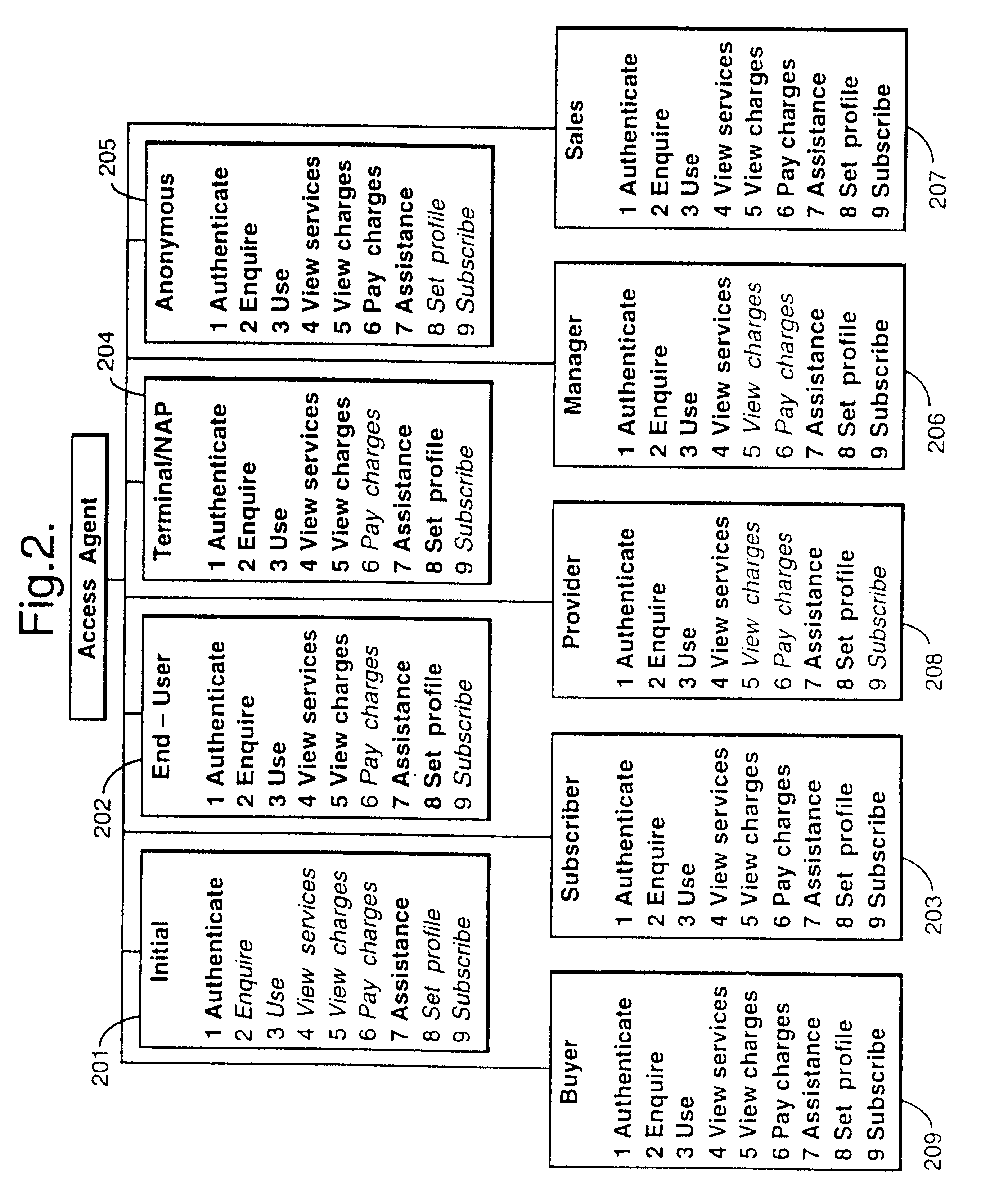Reconfigurable service provision via a communication network
a technology of communication network and reconfigurable service, applied in the field of reconfigurable service provision through communication network, can solve the problems of limiting manageability, extendibility, scalability and robustness, and further complexity involved
- Summary
- Abstract
- Description
- Claims
- Application Information
AI Technical Summary
Benefits of technology
Problems solved by technology
Method used
Image
Examples
Embodiment Construction
Technical Context
As mentioned above, a suitable technical context for embodiments of the present invention would be an information networking architecture of the type defined by the Telecommunications Information Networking Architecture Consortium (TINA-C). Such an architecture is based on Open Distributed Processing (ODP) principles of object orientation and distribution, applied to telecommunications system design using Telecommunications Management Network (TMN) managed objects and Intelligent Network (IN) concepts for service management and control.
In a TINA-C architecture, there are three sets of concepts, a logical framework architecture, a service architecture, and a management architecture.
The logical framework architecture defines concepts and principles for the design of object-oriented software that operates in a distributed environment. Here a traditional layered computer architecture is defined, with computers and computer networks at the bottom, a distributed processin...
PUM
 Login to View More
Login to View More Abstract
Description
Claims
Application Information
 Login to View More
Login to View More - R&D
- Intellectual Property
- Life Sciences
- Materials
- Tech Scout
- Unparalleled Data Quality
- Higher Quality Content
- 60% Fewer Hallucinations
Browse by: Latest US Patents, China's latest patents, Technical Efficacy Thesaurus, Application Domain, Technology Topic, Popular Technical Reports.
© 2025 PatSnap. All rights reserved.Legal|Privacy policy|Modern Slavery Act Transparency Statement|Sitemap|About US| Contact US: help@patsnap.com



